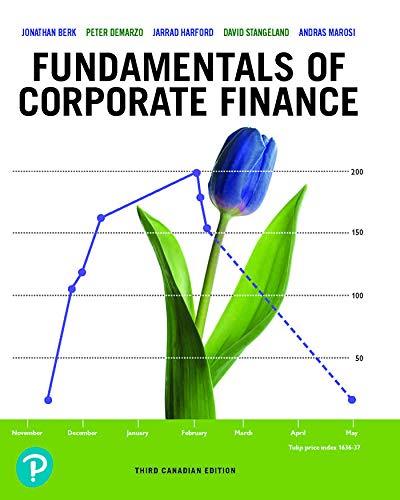Question
Financial ratios are used to analyze a companys strengths and weaknesses by looking at the ratio of various financial data to each other by financial
Financial ratios are used to analyze a companys strengths and weaknesses by looking at the ratio of various financial data to each other by financial and business analysts and investors. Ratios thus estimated convert financial information of companies to a standardized format enabling them to be used to compare different companies to the industry average ratios before making investment decisions. Company practices sometimes differ, which can produce different results so it is best to analyze a number of different ratios to get the most accurate overall picture of the company and comparison (Ross et al, 2019).
It may be a challenging task for capital market participants to determine a companys financial health by looking at financial ratios because it is time consuming, and requires financial and accounting knowledge. However, it is argued that it doesnt require special training or countless hours of research. Even the investor who does not have good knowledge about capital market can make sense of a listed companys balance sheet, profit and loss and cash flow statement by using financial ratios (Australian Shareholders Association, 2010).
Required:
- Calculate the followings for two companies in the same industry of one of the three industry segments of Consumer staples, materials and energy listed on the Australian Securities Exchange (ASX Top 200). Each group is required to analyse 2018/2019 FY annual reports. (List is uploaded in Moodle).
- Liquidity ratios
- Current ratio
- Profit before depreciation and amortisation to current liabilities
- Operating cash flow to current liabilities (OCFCL)
- Cash balance to total liabilities (CBTL)
- Leverage ratios
- Debt to equity ratio (DE ratio)
- Total liabilities to total tangible assets (TLTAI)
- Interest cover ratio
- Profitability ratios
- Earnings per share (EPS )
- Gross profit margin
- Net profit margin
- Return on assets (ROA )
- Return on equity (ROE )
- Valuation ratios
- Price to earnings ratio (PE )
- Price/earnings to growth ratio
- Dividend yield
- Compare the performance of one company with other by using liquidity, leverage, profitability and valuation ratios and evaluate the financial health of two companies.(a) Executive summary (between 100 to 150 words),
(b) Introduction that;
Succinctly summarizes this assignments topic and its key issues, controversies, etc. (no more than 150 words), and
(c) Body that addresses all the requirements see above 1-2 (no more 600 words),
(d) Conclusion that sums up the mains issues of this assignment (no more than 150 words)
(Please give the proper answer included with all topics)
Step by Step Solution
There are 3 Steps involved in it
Step: 1

Get Instant Access to Expert-Tailored Solutions
See step-by-step solutions with expert insights and AI powered tools for academic success
Step: 2

Step: 3

Ace Your Homework with AI
Get the answers you need in no time with our AI-driven, step-by-step assistance
Get Started


